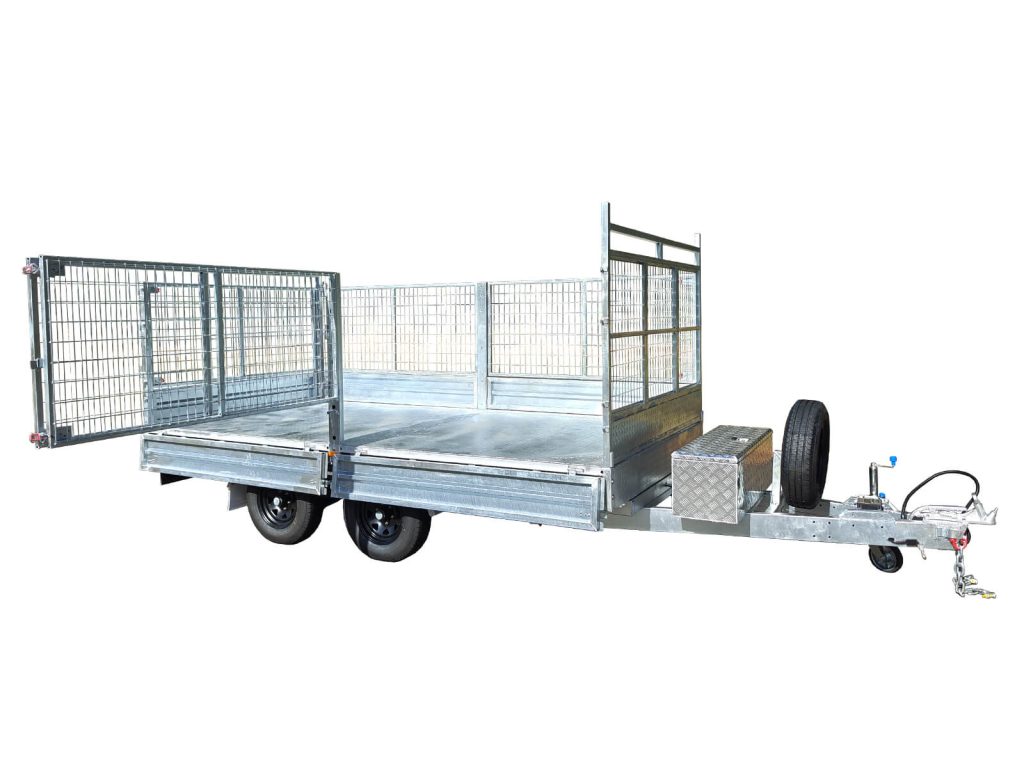Flat‑top trailers (aka flatbed or flat deck trailers) remain one of the most versatile and practical trailer types for Australian transport needs. Whether you haul machinery, building materials, pallets, timber, or large awkward loads, a flat‑top trailer gives you open access from all sides and flexibility for every job.
At Century Trailers, our flat‑top trailers are designed to combine strength, durability, and utility—built to handle Aussie conditions. In this article, we’ll explore the benefits of flat‑top trailers, key features to look for, use cases, and why our models stand out.
The Advantages of Flat‑Top Trailers
1. Unrestricted Loading Freedom
With no side walls or cage barriers, flat‑top trailers let you load and unload from any side—front, back, or sides. This is especially helpful when using forklifts or cranes, or when handling oversize or irregular cargo.
2. Ideal for Bulky & Oversized Loads
Long planks, steel beams, pipes, machinery frames—flat‑tops accommodate these more easily than confined trailers. As long as the weight is safely secured, the open deck is perfect for large, heavy or awkward items.
3. Easy Securing of Cargo
Because you have full access to the deck, you can place tie‑down straps, chains or anchor points wherever optimal. This flexibility means better load stability and safer transport.
4. Lower Maintenance & Simpler Design
Without walls, gates, or hinges, flat‑top trailers have fewer moving parts and less hardware to maintain. This simplicity lowers long‑term upkeep costs.
5. Versatile Use Cases
Flat‑tops suit a wide variety of industries:
Trades (builders, electricians, plumbers) for carrying materials
Landscaping and horticulture jobs
Machinery and equipment transport
General goods and pallet transport
Key Features to Consider in a Flat‑Top Trailer
When comparing flat‑top trailers, make sure they offer the following features to ensure safety, durability, and performance:
Heavy‑Duty Frame & Structure
Your trailer’s frame should be reinforced with steel cross‑members, side rails, and sturdy beams to resist twisting or bending under heavy loads.
Strong Decking Material
Steel checker plate or heavy gauge steel decking is common. It should resist wear, impact, and corrosion over time.
Strong Axles & Suspension
Quality suspension systems and reinforced axles are essential for smooth towing and load stability. Tandem axles are often preferred for heavier loads.
Multiple Tie‑Down Points
Look for integrated anchors, D‑rings, and points along the deck’s edges. The more secure options, the better you can fasten your load.
Braking & Compliance
For trailers above certain weights (depending on state laws), brakes are required. Ensure your trailer is pre‑wired and capable of accepting electric or hydraulic brakes. Also check lighting systems that comply with legal standards.
Galvanised or Corrosion‑Resistant Finishes
In Australia’s varied climate, corrosion is a real threat. A galvanised finish or coated steel helps resist rust, moisture, and general wear.
Optional Accessories
Many flat‑top trailers can be upgraded with extras such as:
Slide rails or adjustable tie rails
Removable stakes or posts
Loading ramps
Spares carrier
Toolbox mounts
How to Choose the Right Flat‑Top Trailer
Here’s a quick checklist to guide your decision:
Estimate Your Load
Weigh your typical cargo (plus margin). Choose a trailer whose payload (ATM minus tare weight) exceeds your usual needs.Select the Right Axle Setup
Light loads → single axle
Heavier / longer distance loads → tandem axleCheck Vehicle Towing Capacity
Make sure your towing vehicle can handle the combined weight of trailer + load + gear.Decide Deck Size & Length
Factor in the longest items you’ll carry—ensure overhangs remain within legal limits.Plan for Securement
More tie-down options means safer loads. Always have good quality straps or chains.Choose Durable Build
For long term use, a robust frame and galvanised finish pay off in longevity.
Why Century Trailers’ Flat‑Top Range Is the Smart Choice
Our flat‑top trailers are designed to meet Australian trades and industries’ demands:
Built with hot‑dipped galvanised steel to resist corrosion
Rugged frames and reinforced decks suited for heavy use
Multiple tie-down points and anchor rails built in
Capability for brake system installations in heavier models
Optional accessories and customization to match your job
Strong warranty support and trusted servicing
We stock several flat‑top sizes and configurations, so whether you need a compact trailer for local jobs or a heavier model for interstate transport, we’ve got options.
Use Cases & Examples
Construction & Trades: Carry timber, steel, windows, scaffolding
Equipment Transport: Move compact machinery, generators, pumps
Landscaping & Gardening: Haul soil, mulch, pavers, plants
General Haulage: Pallets, crates, oversized loads
In every case, a flat‑top trailer offers efficiency, ease, and flexibility.
Conclusion
Choosing a flat‑top trailer is a practical decision for anyone transporting bulky or irregular loads. The open deck, ease of securing cargo, and simpler maintenance make it ideal across multiple industries.
With the quality construction and design features of Century Trailers’ flat‑top models, you’re getting a trailer that’s not only capable but built for Australia. Browse our flat‑top range today and find the configuration that fits your work—then get in touch if you’d like customization or advice.

